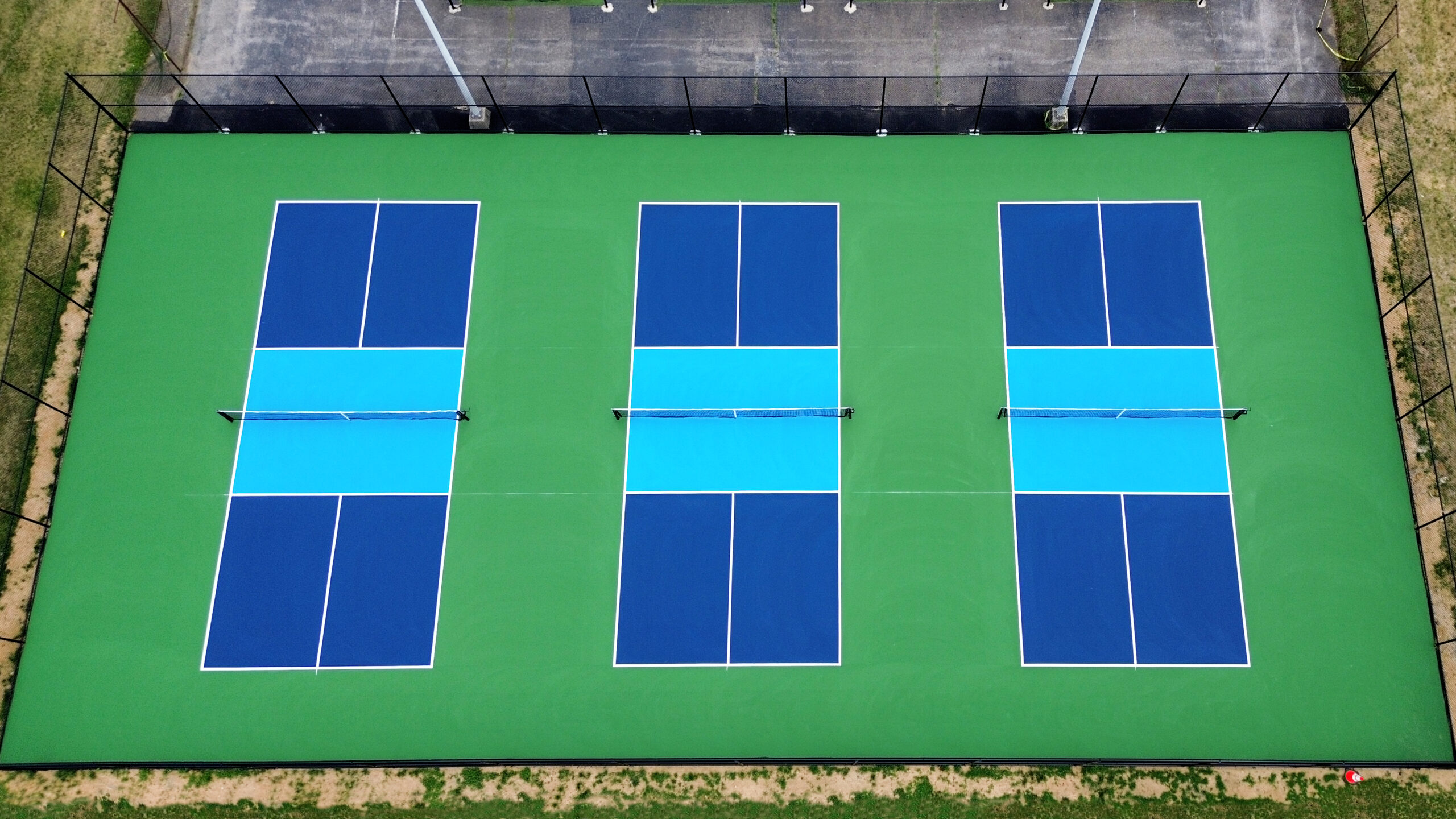Lasting Practices in Pickleball Court Building You Must Know
As the appeal of pickleball continues to increase, so also does the need for lasting techniques in court construction. The influence of these practices prolongs much past the court itself.
Choosing Eco-Friendly Products
Picking environmentally friendly materials is a crucial action in the building of sustainable pickleball courts. The choice of lasting materials not just lessens environmental influence however additionally boosts the long life and efficiency of the court. Trick products include recycled rubber for the surface area, which offers excellent toughness and shock absorption while drawing away waste from garbage dumps.
Furthermore, using locally sourced products minimizes transport discharges and sustains regional economic climates. Pickleball court construction. Making use of native hardwoods for fence and seats can provide a sustainable visual while guaranteeing resilience versus the aspects.
Integrating absorptive materials for court foundations can better add to sustainability by enabling all-natural water drain and reducing runoff. These options not only secure neighborhood ecosystems however additionally promote much healthier play atmospheres.
Effective Drain Solutions
While the choice of environment-friendly products is crucial, applying efficient water drainage options is just as critical for maintaining sustainable pickleball courts. Appropriate drain not only protects the court surface area from water damage but also reduces disintegration and runoff, advertising ecological integrity.
Effective drain systems can consist of absorptive paving, which enables water to penetrate the ground rather than pooling externally. This minimizes the probability of standing water, which can result in mold and other maintenance problems. Additionally, integrating strategically put drainage channels and swales can guide excess water far from the court location, making certain a dry playing surface area and stopping soil disintegration.
Using indigenous vegetation in the landscape design around the courts can additionally boost drain by soaking up excess water and reducing drainage. These plants call for less watering and advertise biodiversity, lining up with sustainable techniques.
Moreover, it is important to consistently keep the drain system to guarantee its lasting efficiency. This consists of cleaning particles and tracking for clogs. By focusing on reliable drain remedies, pickleball court manufacturers can dramatically contribute to the sustainability and long life of the center, ultimately profiting both gamers and the setting.
Energy-Efficient Lighting Options
As the need for pickleball proceeds to expand, incorporating energy-efficient lighting alternatives into court style has actually ended up being increasingly crucial for sustainability. Traditional illumination systems usually take in too much energy, adding to greater functional expenses and environmental effect. Embracing modern, energy-efficient technologies is essential for both brand-new constructions and remodellings.
LED (Light Emitting Diode) illumination stands apart as a top option due to its longevity and power financial savings (Pickleball court construction). Contrasted to traditional illumination, LEDs use about 75% less power and can last as much as 25 times much longer, substantially reducing maintenance prices. Moreover, the directional nature of LED illumination reduces light air pollution, guaranteeing that illumination is concentrated on the court rather than bordering areas.
Sustainable Surface Area Alternatives
Checking out lasting surface area choices for pickleball courts has actually gotten traction amongst players and builders alike. The emphasis on green materials not only aligns with the growing environmental understanding but additionally boosts the efficiency and resilience of the courts.
One popular alternative is using recycled rubber, which can be sourced from used tires. This material gives excellent shock absorption, lowering the risk of injuries for players while advertising sustainability. Furthermore, modular tiles made from recycled plastics use another practical alternative. These tiles are very easy to set up and change, and their adaptability enables different court arrangements.
Natural lawn courts are also becoming a sustainable selection, promoting biodiversity and reducing the heat island impact. However, they require routine maintenance and water, which might not straighten with all sustainability objectives.

Water Conservation Strategies

Another reliable method involves the setup of rainwater harvesting systems. These systems keep and gather rain for use in maintaining court surface areas and landscaping. This method not only conserves potable water yet likewise decreases dependence on municipal resources.
Furthermore, utilizing drought-resistant landscape design around the courts is vital. Native plants need less water and are much better adjusted to local environment conditions, thus decreasing overall water intake. Additionally, utilizing effective watering systems, such as drip irrigation, ensures that water is provided straight to plant origins, reducing dissipation and waste.
Conclusion
Integrating lasting techniques in pickleball court construction considerably contributes to environmental preservation and source effectiveness. By focusing on these techniques, the construction of pickleball courts can line up with more comprehensive environmental objectives while promoting durability and capability within areas.
As the appeal of pickleball proceeds to rise, so as well does the requirement for lasting techniques in court construction.Choosing green materials is a vital action in the building of lasting pickleball courts. By prioritizing energy-efficient illumination alternatives, pickleball court producers can add to a hop over to here more lasting future while meeting the needs of stakeholders and gamers alike.Integrating lasting surface options not only boosts the efficiency of pickleball courts but also paves the method for implementing reliable water conservation techniques.Including sustainable techniques in pickleball court construction dramatically adds to environmental preservation and source performance.